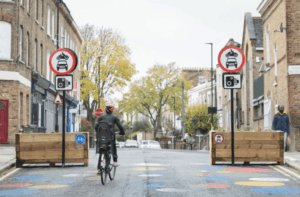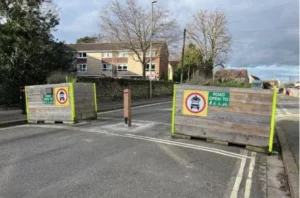Local authorities considering implementing a local traffic neighbourhood (LTN) should follow best practice, including engaging early with both the public and emergency services well as introducing other traffic decarbonisation measures, such as controls on parking or offering alternative mobility solutions.
This is according to a new report, Street shift-the future of Low-Traffic Neighbourhoods, produced by the Centre for London.
The report also says that with regards to LTN’s in London, government should give the Mayor of London and the boroughs new powers to raise funds for the delivery of sustainable travel measures such as low-traffic neighbourhoods.
London Councils and Transport for London should create an LTN Knowledge Hub that helps boroughs learn from each other’s experiences. The Hub should be open so the public and local campaign groups can access it too, says the report.
In 2020, in response to the pandemic and through the Emergency Active Travel Fund, local authorities received funding from the government to introduce low-traffic neighbourhoods (LTNs). Their intended purpose included reducing car traffic in implemented areas, in order to leave streets safer and encourage residents to switch to greener modes of travel including walking and cycling.
Although not new to London’s streets, many of the schemes were highly controversial, with opposition from some road users. Street Shift: The Future of Low-Traffic Neighbourhoods reviews the concerns of Londoners and the experiences of local authorities to understand why LTNs have been divisive and what impact they’ve had so far. Based on these findings, the report proposes new ways to help make London’s streets healthier, safer and greener.
Using a mixed-methods research approach including a review of studies looking at the impact of LTNs, technical guides on how to deliver LTNs, surveys on Londoners’ views, and roundtables with the professionals involved in implementing LTNs, our report concludes that LTNs are effective, but are only one part of the solution to reduce private car use and create healthier streets. Furthermore, to increase their effectiveness, we call for increased consultation and communication between residents and boroughs, alongside supporting measures that further encourage the switch to greener active travel.
The full report can be read here: Centre for London | Street shift – The future of Low-Traffic Neighbourhoods





















